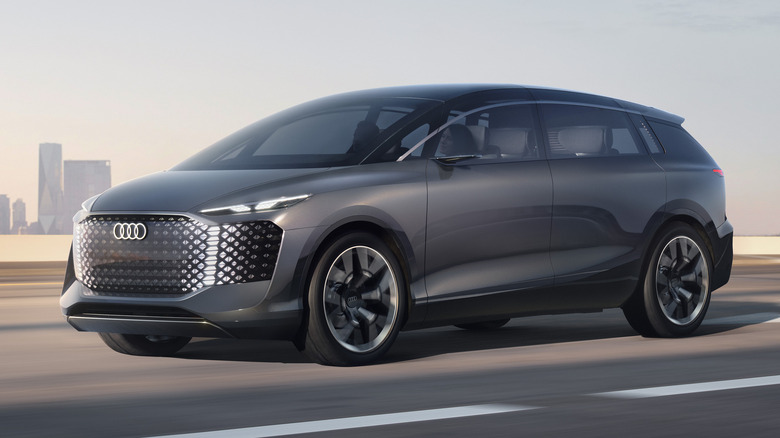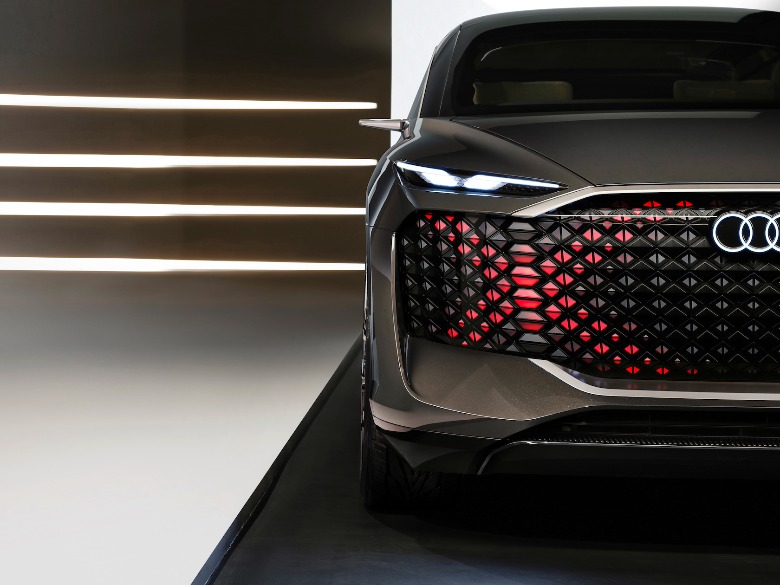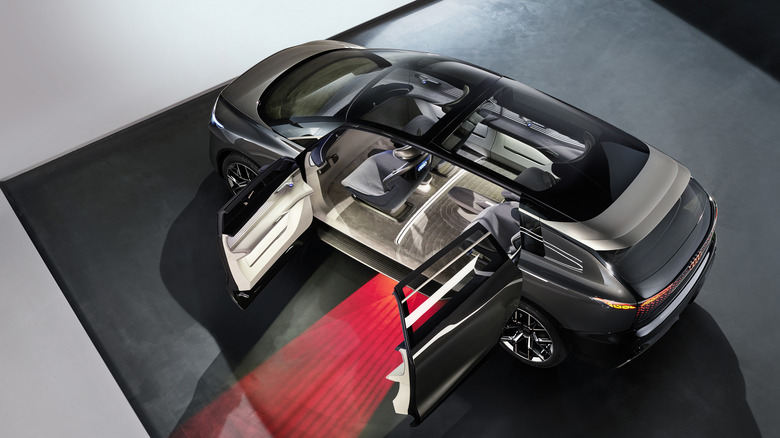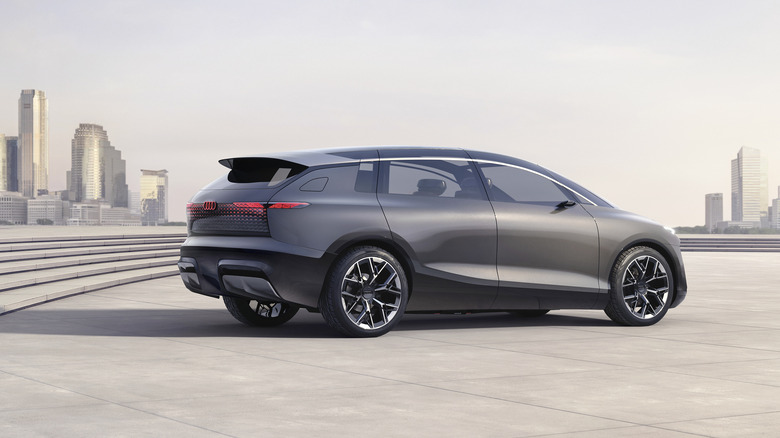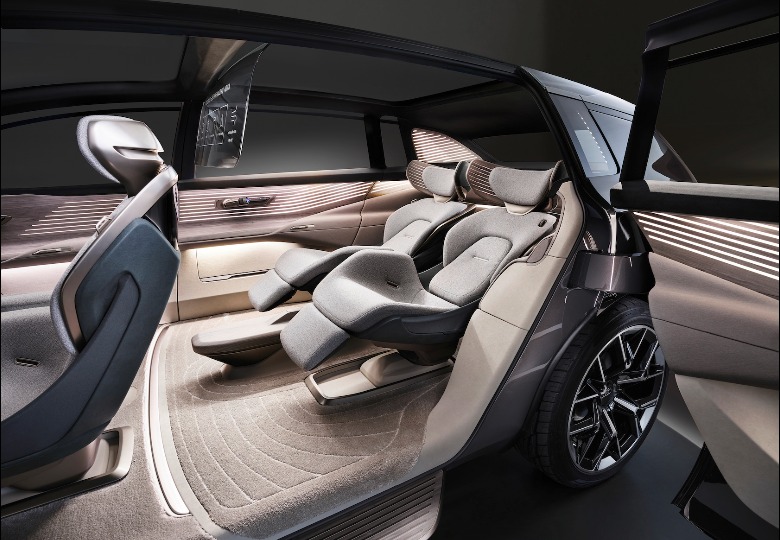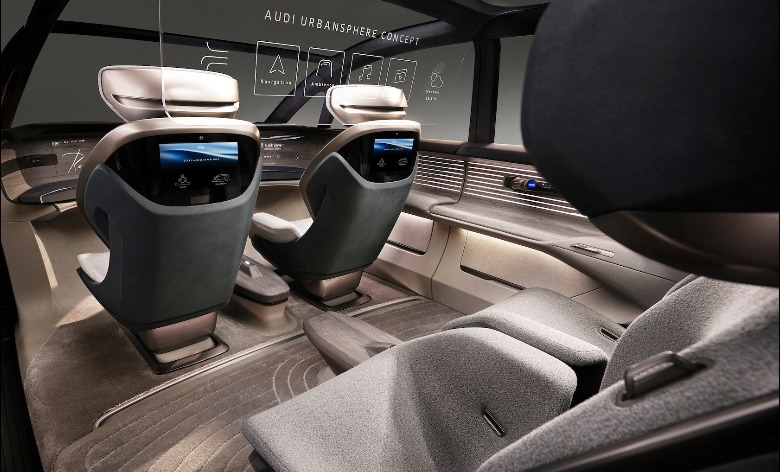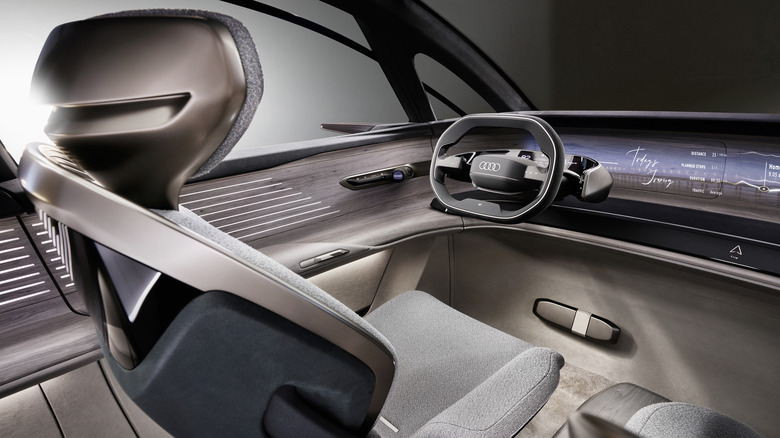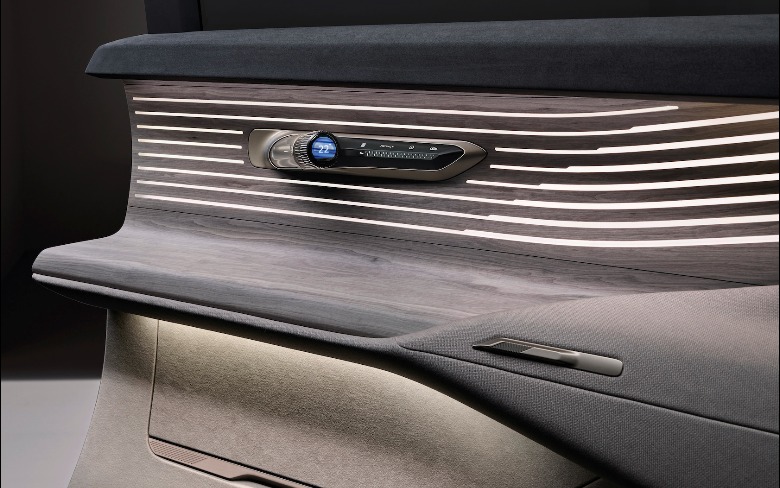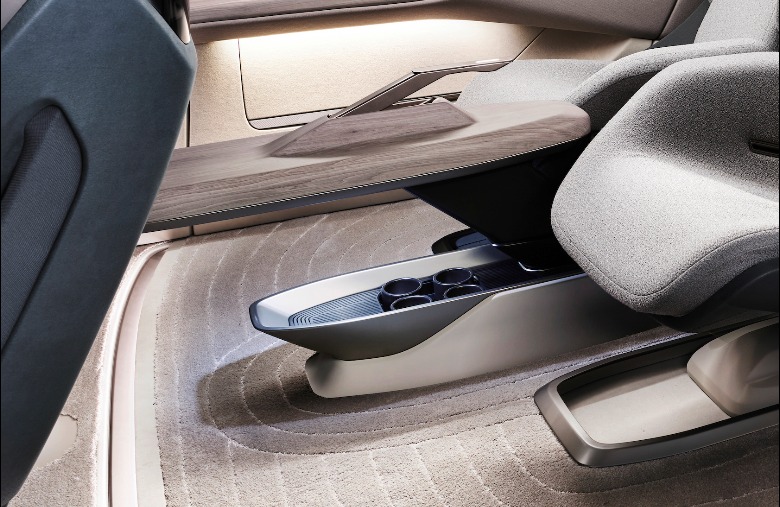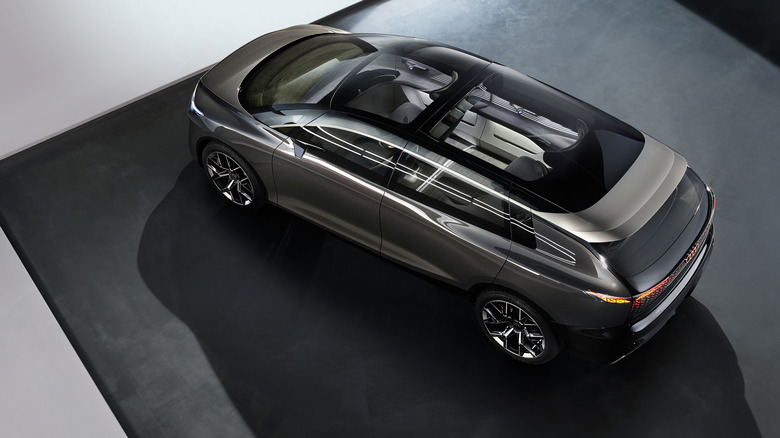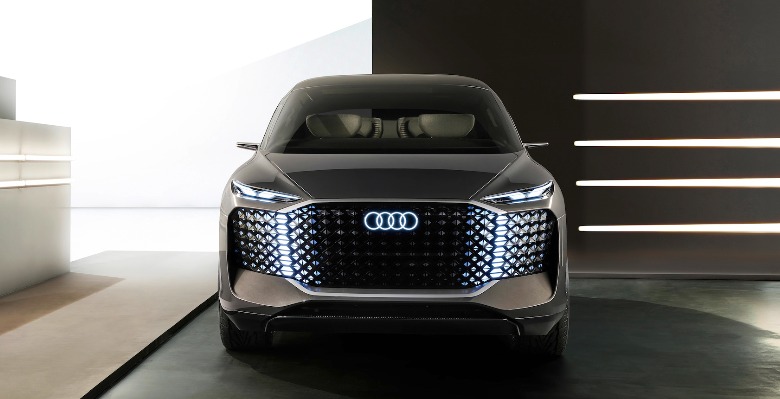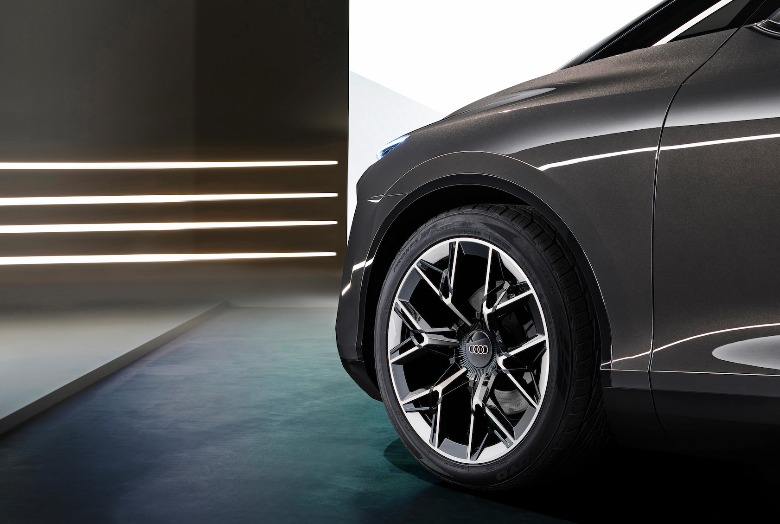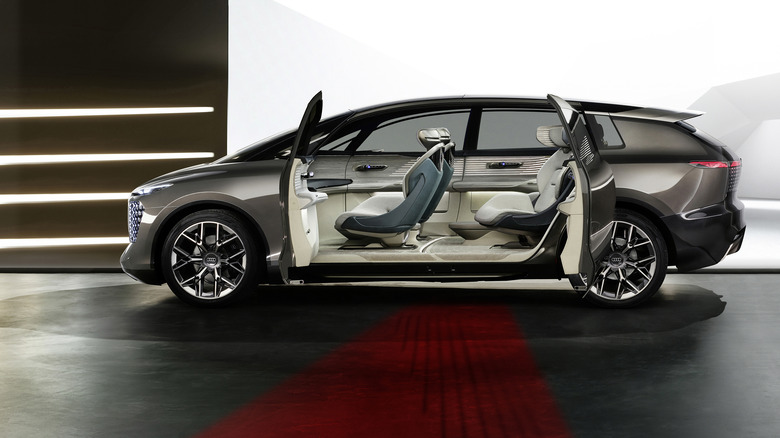Audi Urbansphere Concept Is An Outsized Self-Driving Luxury Apartment On Wheels
Having long been the standard bearer for luxury automobiles, German manufacturer Audi made its move into the EV. segment with it's e-tron line of electric and hybrid vehicles. Audi's latest concept car has broken cover, and if size and convenience are your lodestar, the Urbansphere may just fit the bill. The seeming realization of the automaker's vision of how autonomous transportation may fit into future "megacities," Urbansphere starts with the promise of vast amounts of cabin space and then builds an electric pod around that.
The Urbansphere is perfectly suited, Audi argues, for operation in traffic-dense Chinese megacities, though it could also be useful in any urban setting in which space is a prized commodity. The steering wheel, the pedals, and, indeed, anything you'd associate with manually driving a vehicle have been removed. Instead, the Urbansphere is hoping you'll settle back, relax, and just enjoy the ride.
The third Audi 'sphere'
The Urbansphere is just the latest in a series of near-future concepts that Audi has revealed over the past couple of years. That began with the Audi Skysphere concept in mid-2021, a lengthy all-electric coupe that could physically stretch and contract depending on whether it was being human-operated or left in autonomous mode. The Grandsphere concept followed a few months later, doing away with traditional controls altogether in favor of a more relaxing cabin experience.
Both were built atop the same principle of a Level 4 self-driving. That is to say, an autonomous system which would be capable of operating itself in most scenarios, without demanding human involvement or supervision. It's something beyond any production vehicle on the market today, though Audi says it's expecting to have such a system ready for commercial operation within the second half of the decade.
Audi has big ambitions for its very big EV
That's a big goal, but then the Audi Urbansphere is a big concept. The automaker's largest so far, indeed, it measures a whopping 18 feet long, 6.6 feet wide, and 5.8 feet high. That makes it as long as a GMC Hummer EV, and indeed both electric vehicles have roughly the same wheelbase, at just over 11 feet.
Into that space, Audi's designers have inserted a multi-function cabin. Rather than adding two or three rows of traditional seats, along with all the usual cubbies, storage bins, and other features you'd expect in a large SUV, there are just four individual seats that pivot to face the B-pillar-free doors. Since there's no real need for those in the front row to be looking out of the windshield, those seats can pivot 180-degrees for a lounge-style arrangement.
Alternatively, privacy screens behind the headrests can help separate out the individual quadrants. Each seat gets independent speakers, and an individual monitor. A large-format, transparent OLED screen can fold down from the roof for communal viewing, but doesn't block the panoramic glass roof when stowed.
Plenty of controls, but all hidden away
Despite what you might think at first glance, the Urbansphere does have manual controls: they're just folded away behind the wood, wool, and synthetic textile panels. Gauges and displays are projected onto those surfaces, while a gesture- and eye-tracking-based MMI control navigates through the infotainment system. There's also voice control, as in current Audi production vehicles.
VR headsets are stowed in the armrests — and can be used with Audi Holoride — while more invisible touch panels are embedded into different surfaces around the cabin. There's also a pop-out center console, complete with an integrated water dispenser.
Underneath it all, there's a 120 kilowatt hour battery that occupies almost the whole space between the axles. It drives two electric motors for permanent Quattro all-wheel drive, with 295 kW of power and 690 Nm of torque. For less demanding driving, however, the front axle motor can be decoupled to cut friction and make the EV more efficient overall. Rear-wheel steering helps cut what would otherwise be a fairly vast turning circle.
Big range for the urban jungle
For range, Audi expects the Urbansphere to be capable of around 466 miles, albeit on the less-demanding WLTP cycle. With 800V architecture and 270 kW DC fast charging support, a ten minute recharge could be sufficient for over 186 miles of driving. Twenty-five minutes, meanwhile, could take it from 5% to 80% charge.
While that's happening, you could step outside and marvel at Audi's updated design language. The Singleframe grille is carried over from production vehicles, but can be illuminated with lighting effects to communicate the EV's intentions to other road-users. Headlamps are integrated into its edges, while it's flanked by "Audi Eyes" digital lighting units that not only hint at the company's four-ring logo, but work as turn-signals and to show how the Urbansphere is aware of its environment. Its 24-inch wheels give some sense of the overall scale.
An Audi Light Umbrella — complete with self-illumination that can flash for better visibility once you're out of the car — is also included. Not only is it safer (and dryer) underneath, the automaker says, it'll act as a flattering lamp for better selfies.
Don't hold your breath for Urbansphere production
Production is, of course, unlikely to be on the cards for the Urbansphere concept, at least as shown here, any time in the near future. There's also a not-insignificant question as to whether modern urban environments — megacities or otherwise — are, in fact, best served by huge, individual vehicles like these.
Nonetheless, as a conceptual preview of where Audi sees autonomous driving going in the not-too-distant future, the Urbansphere is an intriguing one indeed. We've seen several attempts to explain how driverless vehicles may change the way we occupy our cars — including Volvo's 360c concept back in 2018, which envisaged a whole lie-flat bed dominating the cabin, and potentially replacing short-haul flights in the process — as traditional automakers jostle to stay relevant even as the metrics for automotive success continue to evolve.
